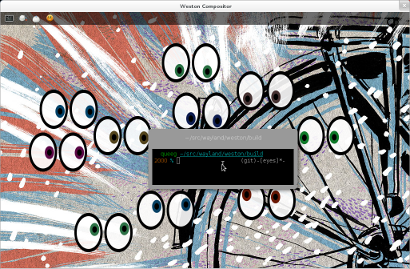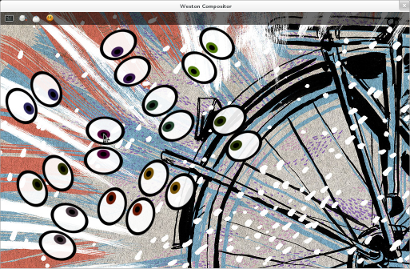Following hot on the heels of this astonishing header from Boost, here are some excerpts from the module defining tuples in the Glasgow Haskell Compiler 7.4.1:
data (,) a b = (,) a b
deriving Generic
data (,,) a b c = (,,) a b c
deriving Generic
(If you can’t read Haskell: (,) a b is another notation for (a, b). This defines types for two- and three-element tuples, with a default implementation of the Generic interface.) Okay so far? The file proceeds to define 4-tuples, 5-tuples, and so on until we get to the 8-tuple definition:
data (,,,,,,,) a b c d e f g h = (,,,,,,,) a b c d e f g h
-- deriving Generic
Surprise commented-out deriving clause! But it’s all plain sailing from here… until we get to 63-tuples:
data (,,,,,,,,,,,,,,,,,,,,,,,,,,,,,,,,,,,,,,,,,,,,,,,,,,,,,,,,,,,,,) a b c d e f g h i j k l m n o p q r s t u v w x y z a_ b_ c_ d_ e_ f_ g_ h_ i_ j_ k_ l_ m_ n_ o_ p_ q_ r_ s_ t_ u_ v_ w_ x_ y_ z_ a__ b__ c__ d__ e__ f__ g__ h__ i__ j__
= (,,,,,,,,,,,,,,,,,,,,,,,,,,,,,,,,,,,,,,,,,,,,,,,,,,,,,,,,,,,,,) a b c d e f g h i j k l m n o p q r s t u v w x y z a_ b_ c_ d_ e_ f_ g_ h_ i_ j_ k_ l_ m_ n_ o_ p_ q_ r_ s_ t_ u_ v_ w_ x_ y_ z_ a__ b__ c__ d__ e__ f__ g__ h__ i__ j__
-- deriving Generic
{- Manuel says: Including one more declaration gives a segmentation fault.
data (,,,,,,,,,,,,,,,,,,,,,,,,,,,,,,,,,,,,,,,,,,,,,,,,,,,,,,,,,,,,,,) a b c d e f g h i j k l m n o p q r s t u v w x y z a_ b_ c_ d_ e_ f_ g_ h_ i_ j_ k_ l_ m_ n_ o_ p_ q_ r_ s_ t_ u_ v_ w_ x_ y_ z_ a__ b__ c__ d__ e__ f__ g__ h__ i__ j__ k__
= (,,,,,,,,,,,,,,,,,,,,,,,,,,,,,,,,,,,,,,,,,,,,,,,,,,,,,,,,,,,,,,) a b c d e f g h i j k l m n o p q r s t u v w x y z a_ b_ c_ d_ e_ f_ g_ h_ i_ j_ k_ l_ m_ n_ o_ p_ q_ r_ s_ t_ u_ v_ w_ x_ y_ z_ a__ b__ c__ d__ e__ f__ g__ h__ i__ j__ k__
…followed by commented-out definitions of everything up to 100-tuples.


